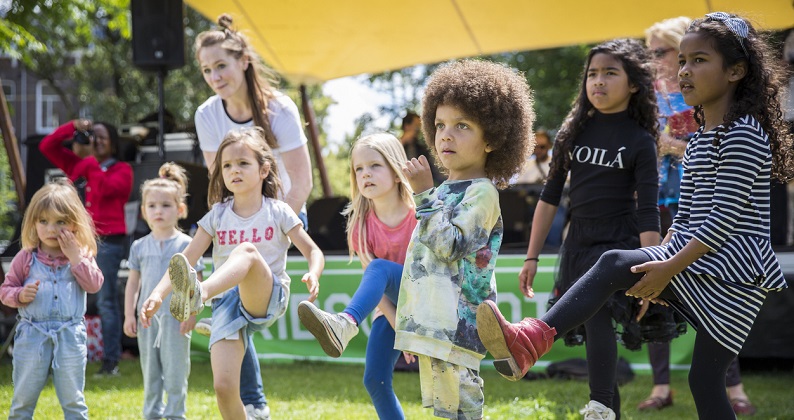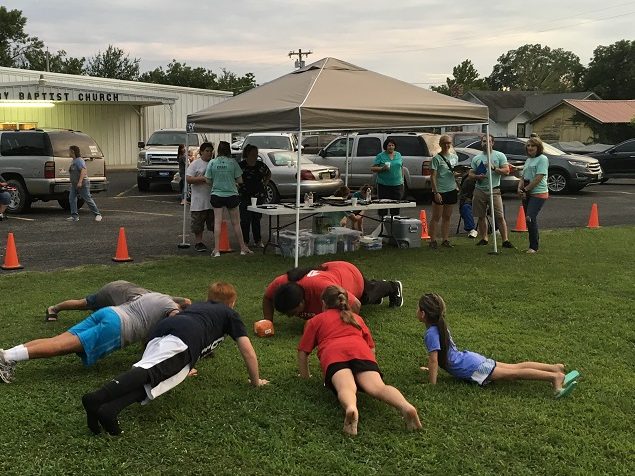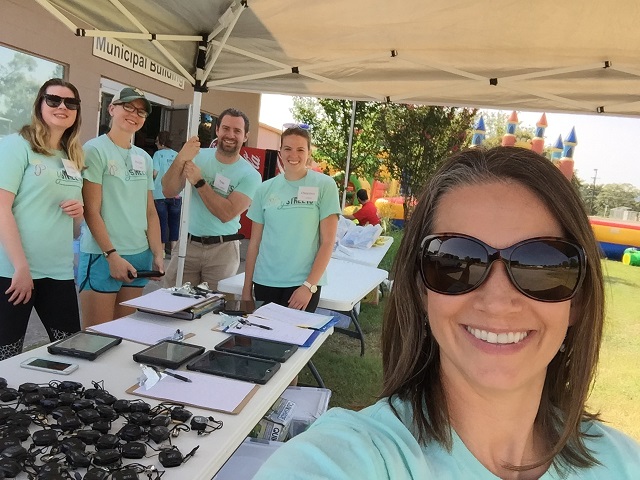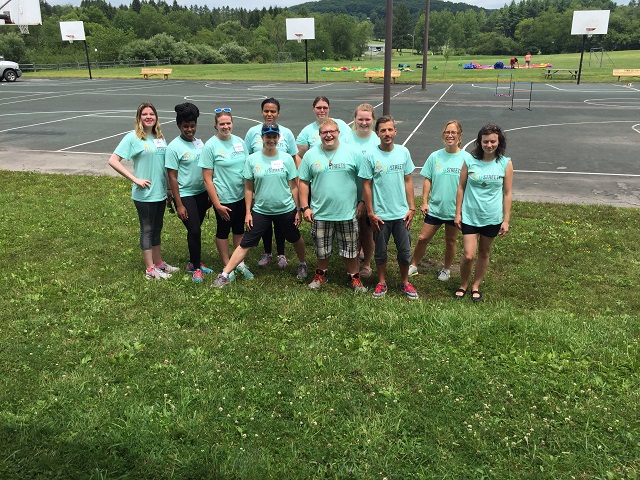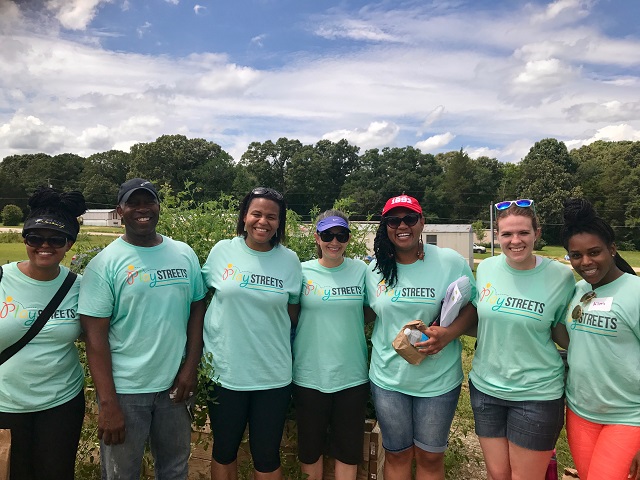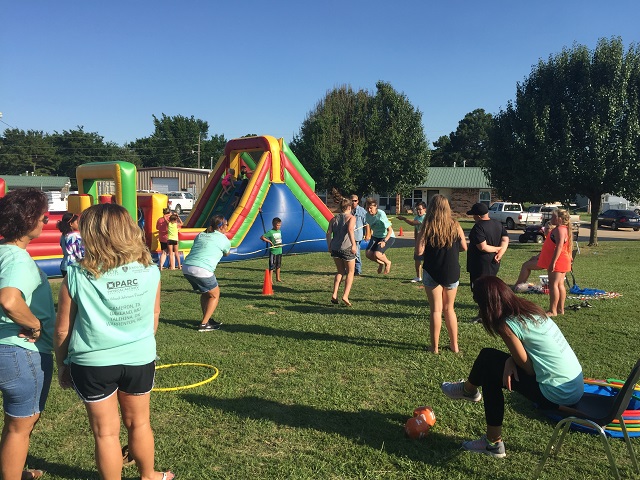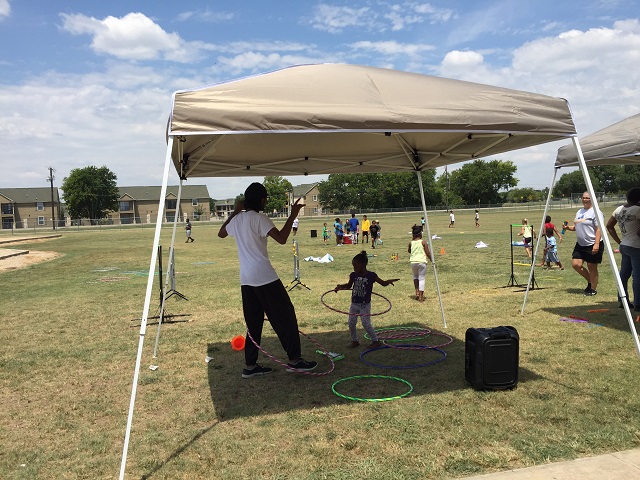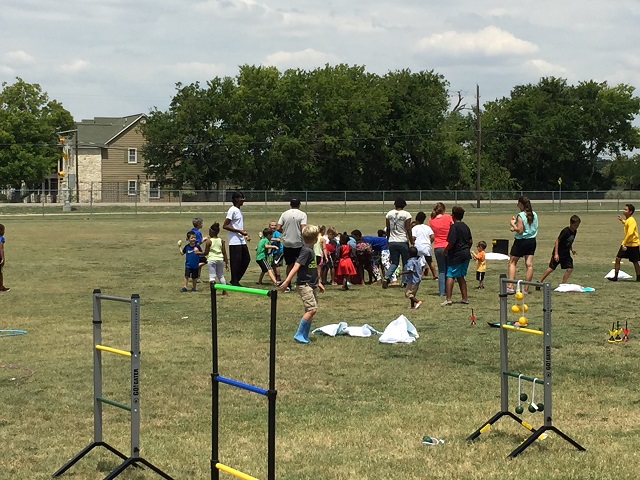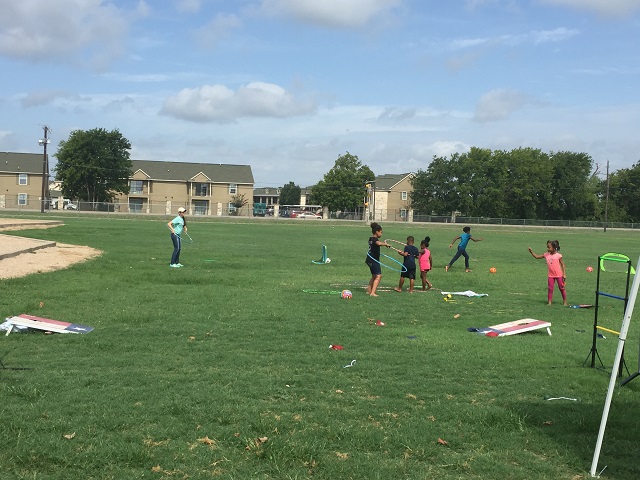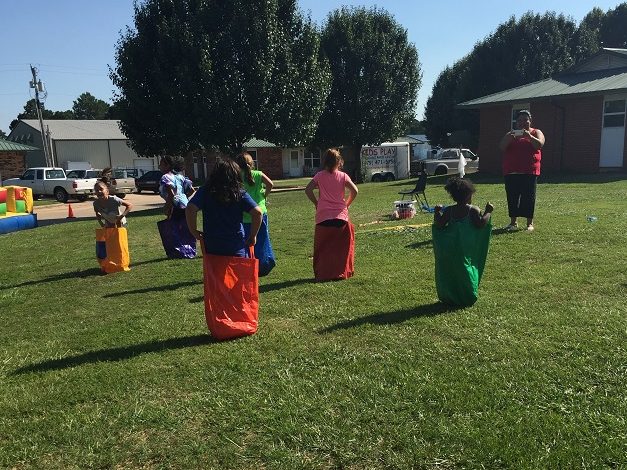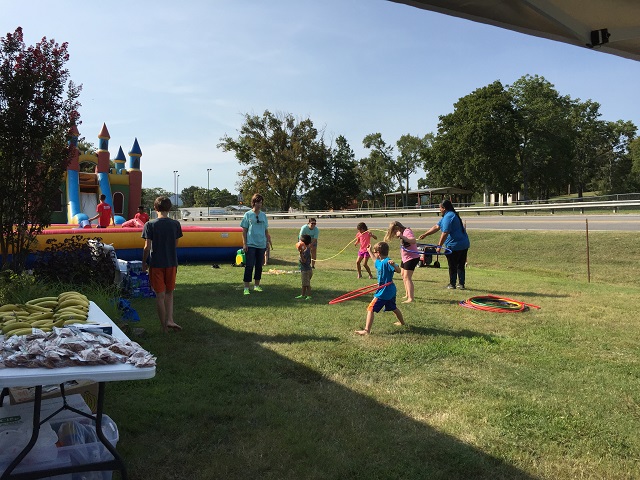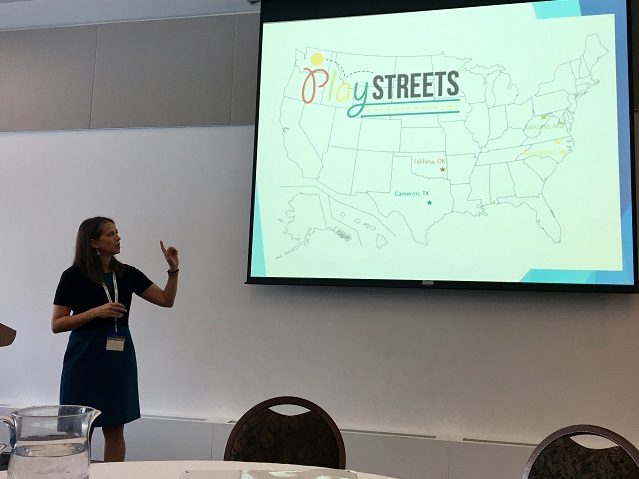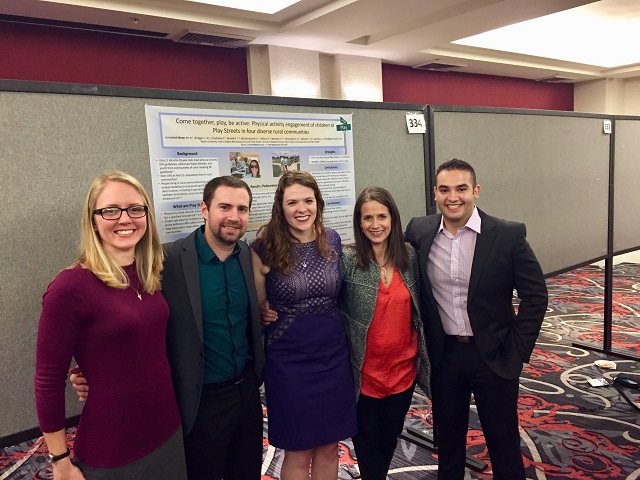

Promoting Safe Places to Play: Implementation of Play Streets in Diverse Low-Income Rural Communities
Description
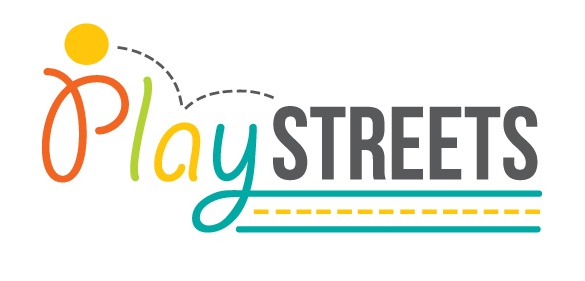 Across the U.S., Play Streets are being implemented in urban areas as temporary street closures that for a specified time period create safe spaces for play. Play Streets are considered one way to address health disparities in children’s health and physical activity by providing places for safe play in neighborhoods without access to safe and well-maintained parks and playgrounds. To date, Play Streets have been primarily implemented in urban and suburban environments. Because of this, there are several questions about how Play Streets might be implemented for children from various racial and ethnic backgrounds who live in rural low-income communities, and how they might differ from Play Streets being implemented in urban areas. The purpose of this study is to examine how Play Streets can be planned and executed to appeal to racially and ethnically diverse rural and low-income communities, which could help direct limited resources to populations most likely to benefit, and focus on Play Streets’ attributes and/or elements that are most likely to increase physical activity.
Across the U.S., Play Streets are being implemented in urban areas as temporary street closures that for a specified time period create safe spaces for play. Play Streets are considered one way to address health disparities in children’s health and physical activity by providing places for safe play in neighborhoods without access to safe and well-maintained parks and playgrounds. To date, Play Streets have been primarily implemented in urban and suburban environments. Because of this, there are several questions about how Play Streets might be implemented for children from various racial and ethnic backgrounds who live in rural low-income communities, and how they might differ from Play Streets being implemented in urban areas. The purpose of this study is to examine how Play Streets can be planned and executed to appeal to racially and ethnically diverse rural and low-income communities, which could help direct limited resources to populations most likely to benefit, and focus on Play Streets’ attributes and/or elements that are most likely to increase physical activity.
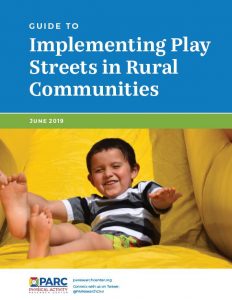 We provided mini grants to four community organizations in Warrenton, North Carolina, Talihina, Oklahoma, Oakland, Maryland, and Cameron, Texas, experienced working with rural low-income areas with large populations of African American, American Indian, Caucasian, and Hispanic children, respectively to implement four Play Streets during summer 2017. Using the RE-AIM Framework, we are measuring reach (e.g., number of attendees), effectiveness (e.g., physical activity), adoption (e.g., how Play Streets are being culturally tailored), implementation (e.g., processes, facilitators, barriers), and maintenance (e.g., sustainability). Child physical activity is also being assessed using the System for Observing Physical Activity and Recreation in Communities (SOPARC) and pedometers. Pedometers are also being used to measure parent physical activity at the Play Streets. Surveys, interviews, and focus groups are being conducted with parents, children, and community organizations’ members to learn which Play Street attributes are most likely to promote child physical activity, how each organization implemented the Play Streets, impacts of having Play Streets, and how to sustain them.
We provided mini grants to four community organizations in Warrenton, North Carolina, Talihina, Oklahoma, Oakland, Maryland, and Cameron, Texas, experienced working with rural low-income areas with large populations of African American, American Indian, Caucasian, and Hispanic children, respectively to implement four Play Streets during summer 2017. Using the RE-AIM Framework, we are measuring reach (e.g., number of attendees), effectiveness (e.g., physical activity), adoption (e.g., how Play Streets are being culturally tailored), implementation (e.g., processes, facilitators, barriers), and maintenance (e.g., sustainability). Child physical activity is also being assessed using the System for Observing Physical Activity and Recreation in Communities (SOPARC) and pedometers. Pedometers are also being used to measure parent physical activity at the Play Streets. Surveys, interviews, and focus groups are being conducted with parents, children, and community organizations’ members to learn which Play Street attributes are most likely to promote child physical activity, how each organization implemented the Play Streets, impacts of having Play Streets, and how to sustain them.
Communication Plan
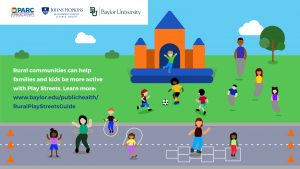 We will collaborate with ChangeLab Solutions to develop a resource guide on planning and implementing Play Streets in diverse rural low-income communities. The guide will explore policy and legal issues, and will include case studies illustrating how each of the four communities created and implemented Play Streets. We will publish several manuscripts, develop research briefs that will be widely disseminated, and present these research results to policymakers and research audiences to support sustainability of Play Streets.
We will collaborate with ChangeLab Solutions to develop a resource guide on planning and implementing Play Streets in diverse rural low-income communities. The guide will explore policy and legal issues, and will include case studies illustrating how each of the four communities created and implemented Play Streets. We will publish several manuscripts, develop research briefs that will be widely disseminated, and present these research results to policymakers and research audiences to support sustainability of Play Streets.
Research Findings and Products
- Promoting Physical Activity with Temporary Street Closures, in the May 2018 issue of NRPA Parks & Recreation magazine, summarizes preliminary study findings.
- ‘On the Geaux’: How a Playground on a Truck Brings Joy, published November 14, 2018 in The Pew Charitable Trusts’ Stateline, interviews Dr. Pollack Porter about the role of Play Streets in rural communities.
- Systematic Review of How Play Streets Impact Opportunities for Active Play, Physical Activity, Neighborhoods, and Communities, in BMC Public Health 2019, 19:335.
- A 3-page lay summary of this article is also available.
- Examining the Implementation of Play Streets: A Systematic Review of the Grey Literature, in Journal of Public Health Management & Practice 2019, doi: 10.1097/PHH.0000000000001015.
- A 2-page lay summary of this article is also available.
- Assessing Physical Activity in Temporary Spaces: Application of SOPARC / iSOPARC® for Play Streets, in Research Quarterly for Exercise and Sport 2019, doi.org/10.1080/02701367.2019.1656793.
- A 2-page lay summary of this article is also available.
- Come Together, Play, Be Active: Physical Activity Engagement of School-age Children at Play Streets in Four Diverse Rural Communities in the U.S., in Preventive Medicine 2019, 129, doi.org/10.1016/j.ypmed.2019.105869.
- A 3-page lay summary of this article is also available.
- Guide to Implementing Play Streets in Rural Communities, published June 2019, provides guidance and recommendations, based on first-hand experience, on how to plan and put on a Play Streets in rural communities. The Guide informs each step of the implementation process (before, during, and after the Play Street) and provides examples and feedback from communities who have hosted their own rural Play Streets.
- Infographic: Rural Play Streets Guide highlights how Play Streets can provide families who live in rural communities access to safe places for their kids to be active.
- Boosting Physical Activity by Turning Streets and Other Public Spaces into Play Streets – Keshia Pollack Porter and Renee Umstattd Meyer spoke with the State of Obesity website about why Play Streets are important and how advocates and decision-makers can support them across the country.
- Creative Solutions at the Heart of Rural Communities: Interview with M. Renee Umstattd Meyer – PARC’s co-Director Renee Umstattd Meyer recently sat down with JPHMP Direct to participate in the podcast Views from the Front Porch: Rural Physical Activity.
- Are Play Streets Possible During COVID-19? – Article in PlayCORE’s Placemaking magazine explaining how Play Streets could be possible during COVID-19.
- Implementing Play Streets in Low-Income Rural Communities in the United States in Health Promotion Practice 2020, doi.org/10.1177/1524839920957228
- Differences in child physical activity levels at rural Play Streets due to activity type and sex in Journal of Healthy Eating and Active Living 2020.
- A 2-page lay summary of this article is also available.
Project Team
Keshia Pollack Porter, PhD – Johns Hopkins University, Principal Investigator, [email protected]
Renée Umstattd Meyer, PhD – Baylor University, Co-Principal Investigator and PARC Co-Director, [email protected]
Christina Bridges – Baylor University, lead Research Assistant and Project Coordinator
Emily Wilkins – Baylor University, Research Assistant
Tyler Prochnow – Baylor University, Research Assistant
Megan McClendon – Baylor University, Research Assistant
Gabriel Benavidez – Baylor University, Research Assistant
Elisa Morales – Baylor University, Research Assistant
Kimberly Arnold – Johns Hopkins University, Research Assistant
Amelie Hecht – Johns Hopkins University, Research Assistant
Tiffany Williams – Gramercy Research Group, Research Assistant
George Bailey – Gramercy Research Group, Research Assistant
Yashonda Mobley – Gramercy Research Group, Research Assistant
Christiaan Abildso – West Virginia University School of Public Health, Study Consultant
